Topics:
Social Media MarketingSubscribe now and get the latest podcast releases delivered straight to your inbox.
12 ways you're blowing your social media strategy
- You're on the wrong platforms
- Your brand isn't consistent
- You're not active enough (or at the right times)
- You're not using video
- Your video doesn't have captions
- You're not scheduling posts
- You're not responding to comments
- You're not being human
- You're not sharing content that users care about
- You're not leveraging employees
- You're not monitoring key performance metrics
- You don't have an employee owning it all
Ah, social media: that powerful marketing tool for businesses that is so incredibly easy to screw up.
The power of effective social strategy is easily quantified. According to the Sprout Social Index, after following a brand on social media:
- 91% percent of people will visit the brand’s website or app
- 89% of people will buy from the brand
- 85% of people will recommend the brand to a family or friend
I wouldn’t be surprised if you’re frustrated or confused about those incredible numbers. Plenty of businesses aren’t getting the followers or engagement they want from social media and, in turn, are wondering if it’s all a waste of time.

The truth is, companies that aren’t getting great ROI for social media are probably doing it wrong.
Social media is not a “If you build it, they will come,” kind of thing. You can’t just set up your profiles, kick back, and assume that just because 3.6 billion people globally are using social, some of them will find you.
There is a laundry list of things you need to do and do well on social media to unlock the impressive numbers found in the Sprout Social Index — and of course, plenty of things you shouldn’t be doing.
Feeling overwhelmed? I highly recommend taking the phenomenal IMPACT+ course “Fundamentals of Social Media Marketing,” taught by my colleague Stephanie Baiocchi, or the Social Media Marketing certification course in HubSpot Academy.

In the meantime, start by checking out these 12 common social media mistakes tons of businesses make.
If you’re aware of them you can avoid them, and even doing that much will put your company in a better position to gain the followers and engagement you need.
1. You're on the wrong platforms
Over the years, I’ve worked with a variety of companies in different industries: retail, healthcare, technology, manufacturing — you name it.
Despite their different products and services, many companies expressed similar frustrations about social media, saying things like, “We set up profiles on Facebook, Twitter, LinkedIn, Instagram, TikTok, and Snapchat and it’s all so overwhelming!”
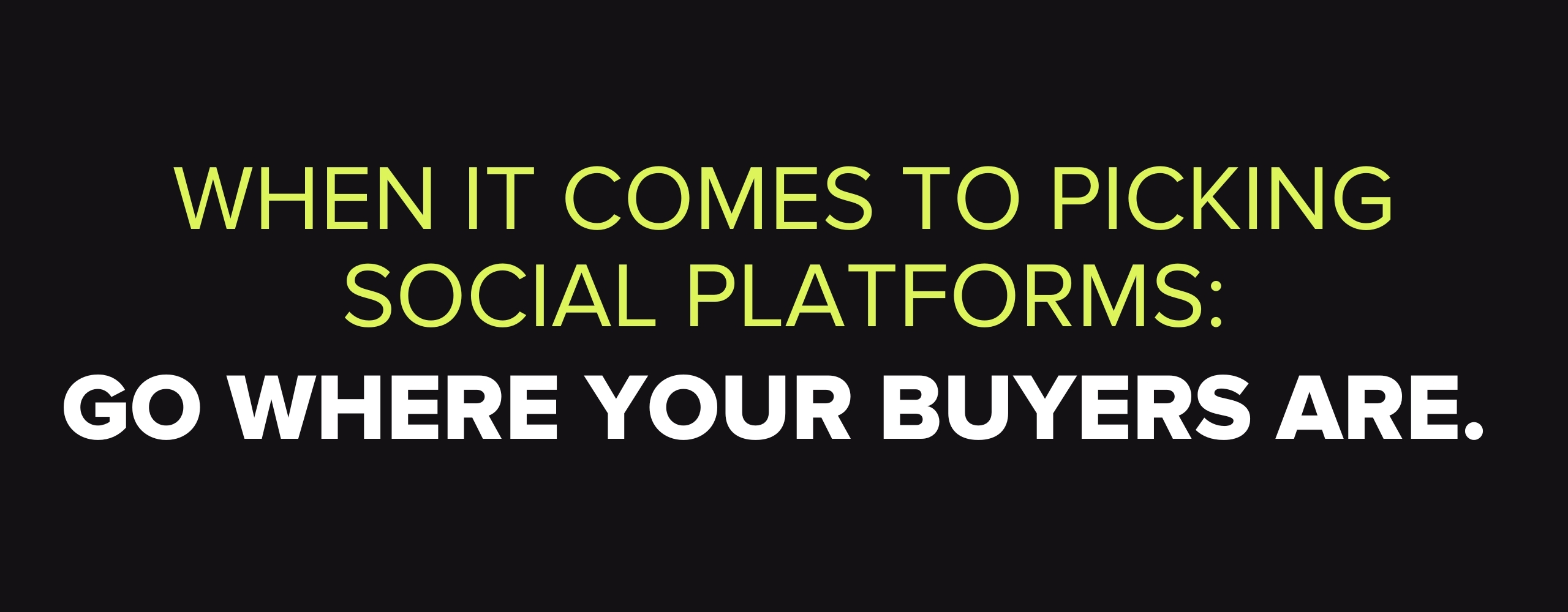
Of course, you’re overwhelmed! One of the biggest mistakes businesses make with social media is assuming they need to be on every single channel just because. There is one rule when it comes to picking what social platforms to spend time on: Go where your buyers are.
You won’t get engagement or leads from people who aren’t interested in what you’re selling, and if people who are interested don’t use those apps, then they won’t even be there to engage. So if your ideal buyers are not on a certain social channel, don’t waste your time there. It’s really that simple.
You can use available demographic information about the different platforms, such as age and location, and put it up against the data you have on your buyers to see where you fit in.
A great point Steph raises in her IMPACT+ course is that if you aren’t sure where your buyers spend time, you can do a survey and ask your current customers. There’s no reason to jump into social media blindly. Let the data be your guide.
2. Your brand isn't consistent
Your social media profiles are an extension of your business so they darn well better look and sound like it.
Whether people are navigating to your social profiles from your website or vice versa, the last thing you want is for them to be totally disoriented because they don’t look and sound the same.
Consider using your company logo for the smaller social media profile images so your brand is immediately recognizable.
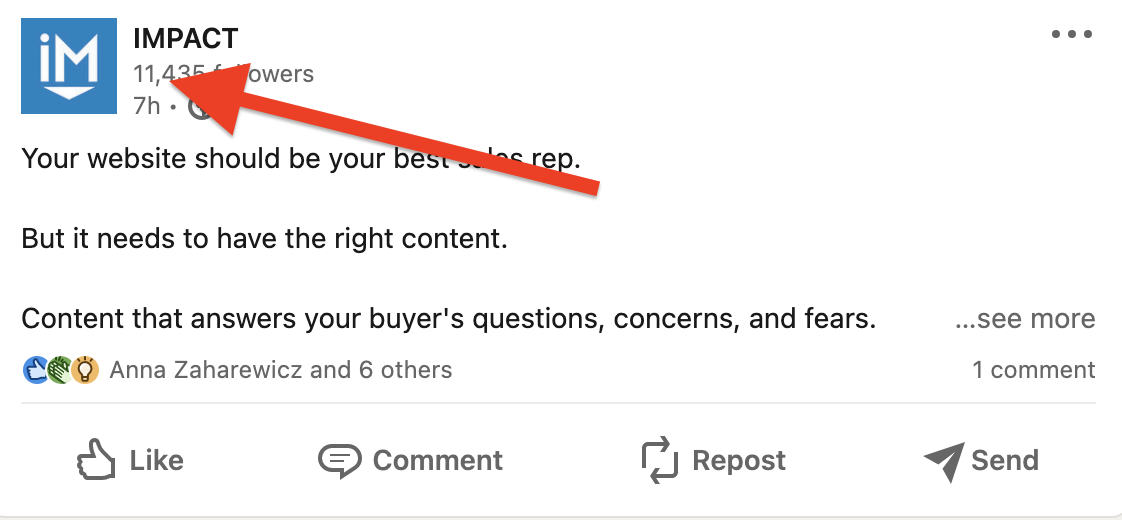
You can have a little more fun with banner photos, the larger background images, and use a group photo of your employees or a shot of your products, just make sure they’re crisp and clear.
Be warned that different platforms require different photo dimensions. Canva offers social media templates you can use if you’re worried about getting it right.
As for the posts themselves, you need to use the tone and voice espoused by your brand identity so your audience knows they’re in the right place. Different social media channels have different vibes — LinkedIn being more professional and Instagram being more casual, for example — so you have some freedom there. The biggest thing is to always sound like you.
GoPro is a great example of a company that uses social media channels differently while still being consistent.
They use Facebook to promote their brand and connect with existing customers:
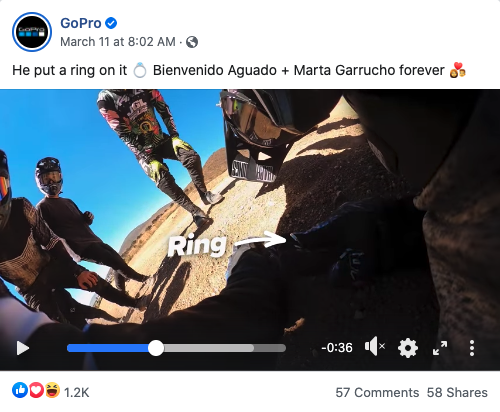
Instagram to highlight gorgeous footage captured by their cameras;

and Twitter for things like product announcements.
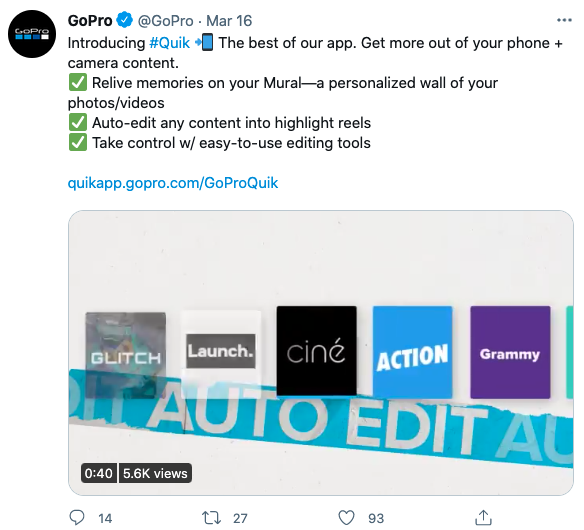
Despite the different channel strategies, GoPro is always GoPro.
3. You're not active enough (or at the right times)
You created accounts for the right channels and your branding is on point; Well done! Now you actually have to be social, and tweeting once a month ain’t gonna cut it.
If your last post was in 2015, I’m going to assume you went out of business.
What’s right for some companies may not be what’s right for yours. But there is research to guide you.
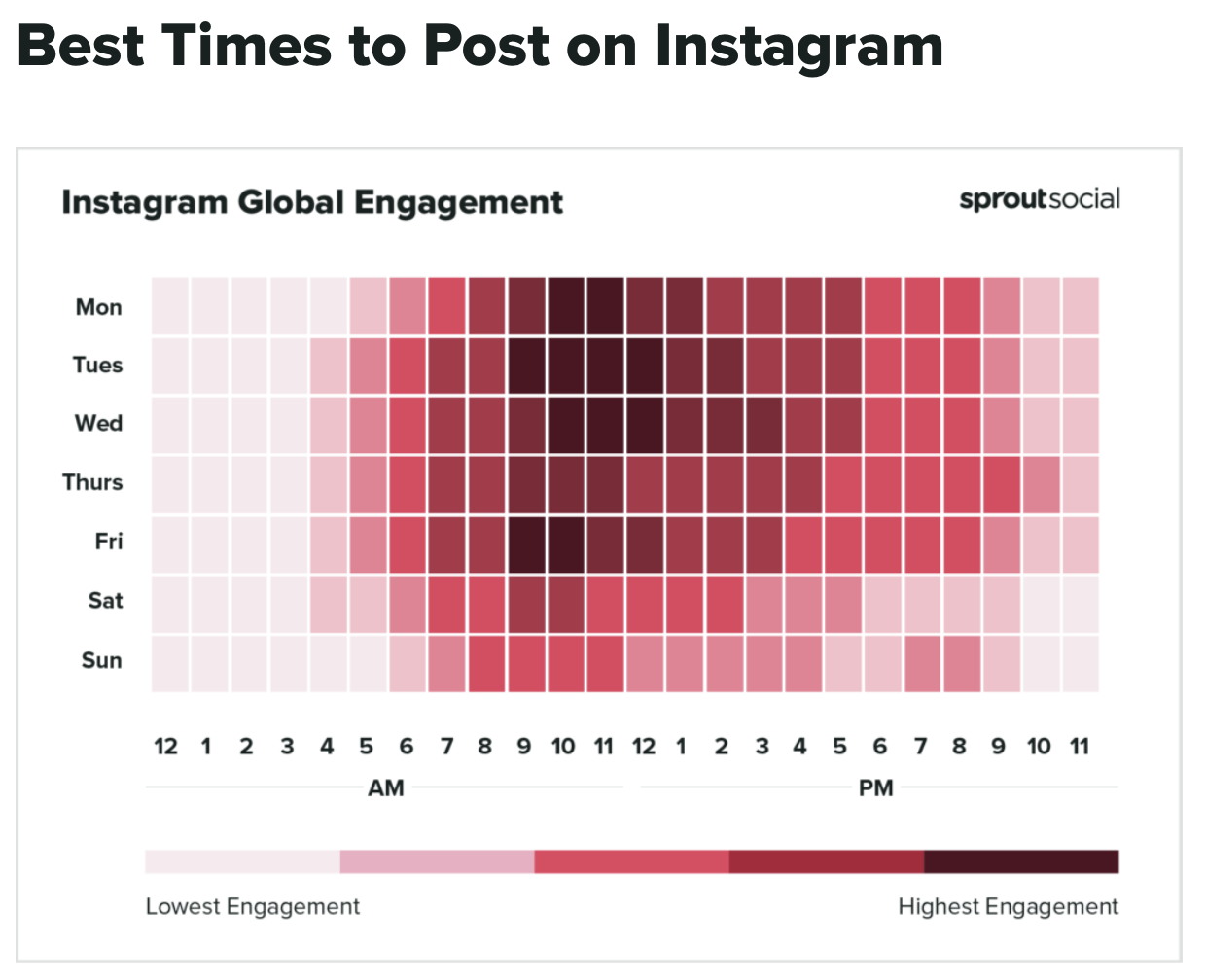
(SproutSocial)
The best way to figure it out is to schedule some posts and see what happens. Give yourself at least 30 days of testing time and then check the analytics to see what the data shows.
Have you gotten more engagement at certain times of day? What post brought in new followers? Does your audience like to chime in when you ask questions or do they prefer commenting on videos?
Continue to go back to the analytics to see how you can optimize, and never stop experimenting.
4. You're not using video
You knew I had to talk about video. After all, the medium is one of the fastest ways companies can build trust with their audiences.
People believe things they can see. If you want them to trust your expertise and the things that you’re saying, you need to show as well as tell them how you can help. So why the heck aren’t you?
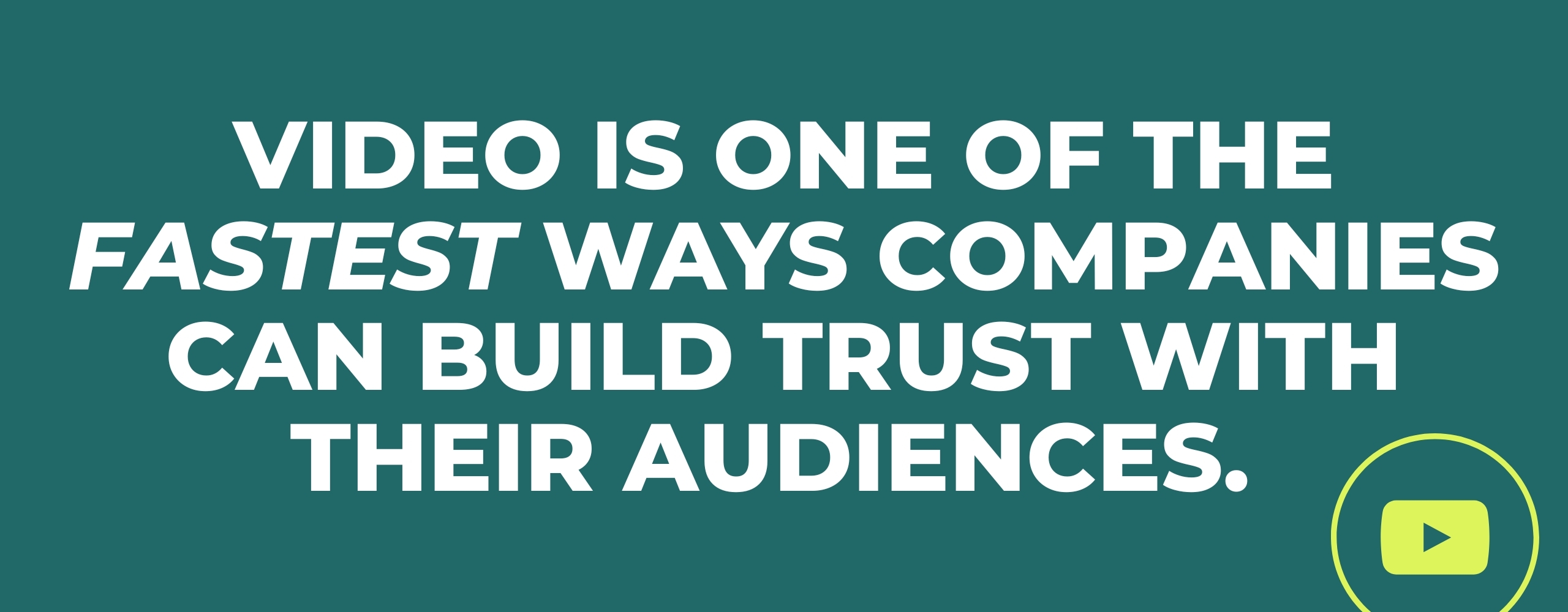
Video is simply more efficient and effective. Research shows that our brains process video 60,000 times faster than text. With that in mind, it’s no wonder we can see social media engagement increases when video is included.
On Twitter alone, tweets with video see 10x more engagement than those without. Similar results can be seen on Facebook, Instagram, and LinkedIn as well.
If you’re worried about spending a ton of time and money on producing exceptional video content just for social media, don’t be. The rules that apply to your website videos don’t apply to social.
Feel free to share iPhone videos and keep things more informal. You can certainly use your website videos on your social media channels, just cut them up into shorter clips that are easier to digest.
Social media is also a great place for leveraging live video and short-form video. Conduct Q&A or “Ask Me Anything” sessions for your prospects and customers, share short how-tos, or teasers to longer explainers hosted on your site, or do a product release live.
Make it as easy as possible for your buyers to put faces to your company name and see those faces in their feeds so you’re top of mind when they need you.
5. Your video doesn't have captions
Captions help with accessibility, but that’s not the only reason for including them in your videos.
Depending on the social network, 60-85% of people watch videos without sound. Maybe they’re watching while they’re supposed to be working, maybe they’re trying not to wake a sleeping baby, or maybe they’re in the bathroom—whatever the reason, you need to account for it.
Vidyard, an online video platform for businesses and an IMPACT favorite, makes adding captions extremely easy within the tool itself. Of course, the video walkthrough for this feature has captions so you can see what they’ll look like.
With the spread of AI, there are ever more caption tools out there like Rev, Quicc, and Descript, so don't allow your audience to miss out.
6. You're not scheduling posts
Yes, it’s important to have some social posts that are done in the moment. You should be reacting to news as appropriate, live-tweeting relevant events, and occasionally hopping on the bandwagon of trending topics.
But you should also schedule posts in bulk. It will give you peace of mind to know that even on days when you are stuck in meetings or have other work to do, your social channels won’t go dark.
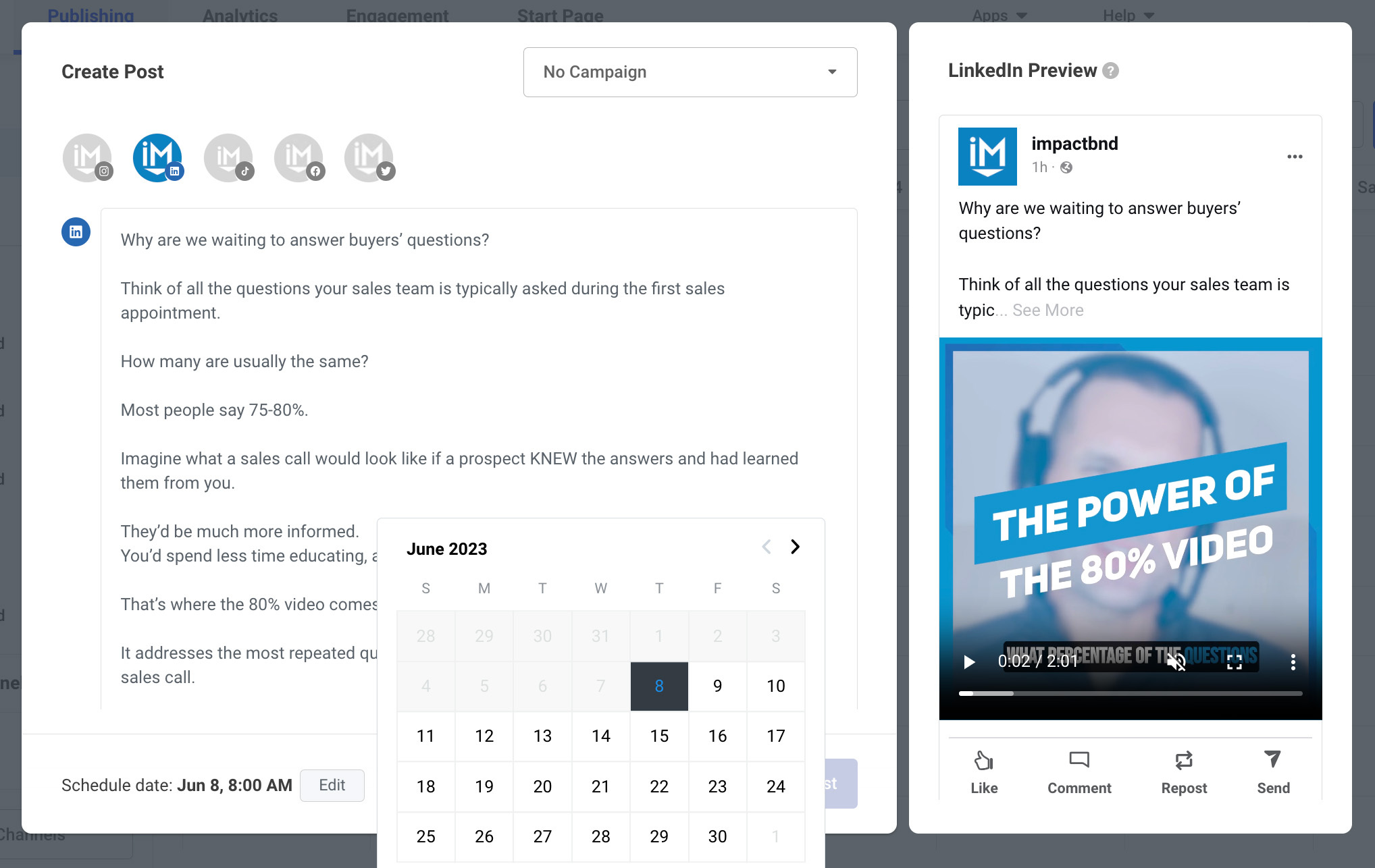
Though you can schedule future posts in many platforms these days, there are a number of different tools that allow you to bulk upload spreadsheets worth of content. Some of our favorites are HubSpot, SproutSocial, or Hootsuite.
Start by creating a calendar in a spreadsheet of the posts you want to share, the dates they’ll be published, and the networks they’ll be published to. HubSpot has a great template you can use to get started. If this feels overwhelming, start with a week of posts and work your way up to more.
With your spreadsheet in hand, upload to the tool of your liking. Just be sure to spot-check the posts from time to time to make sure A) the upload worked, B) they’re being published as intended, and C) they’re still appropriate to share as things change in the world.
That last point is extremely important.
In April of 2013, the U.S. was collectively reeling after the Boston Marathon bombing. No company in its right itsmind would have thought it the right time to tweet business promotions. Well, all except for cooking site Epicurious.
The business shared recipes for their whole-cranberry scones with its 480,000 Twitter followers in the wake of the tragedy and tried to position it as an effort to help people cope.
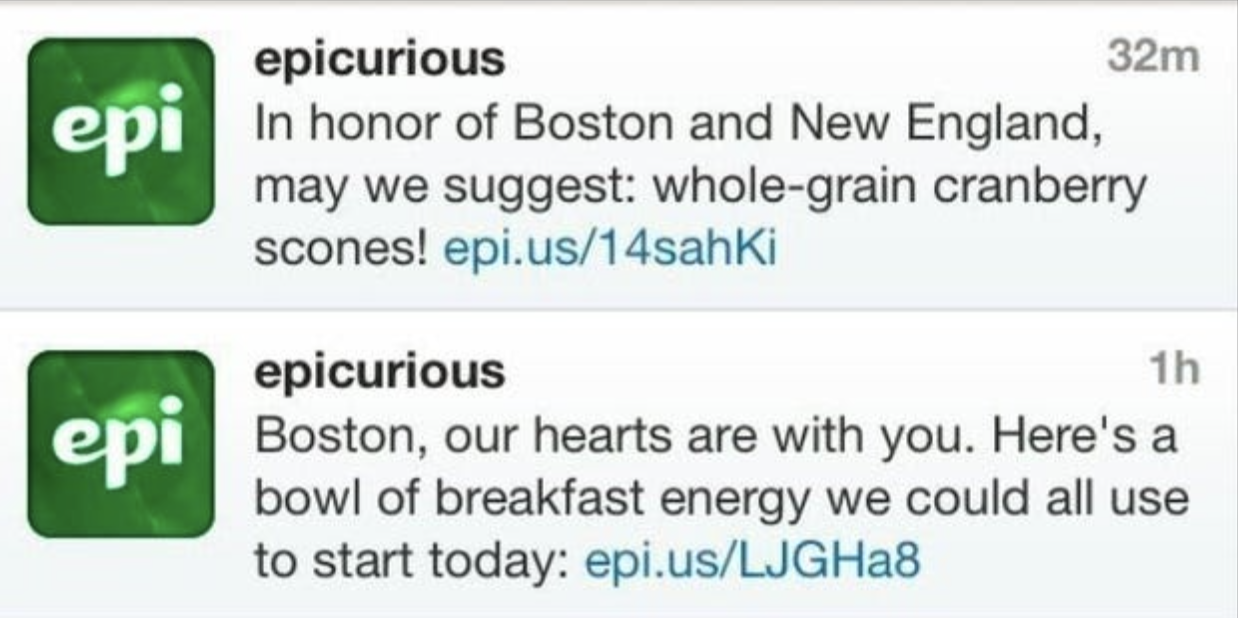
Epicurious spent a good amount of time apologizing after the fact.
Avoid this kind of social media faux pas by regularly checking your scheduled social to make sure it’s still appropriate to send and/or keeping an eye on posts when moments like these do occur.
7. You're not responding to comments
Do not let your social media accounts be 100% output.
When people engage with your brand, you need to respond. Buyers in general want to know that if they have a question or a problem, they can reach out and get a response. People expect you to do it and if you don’t, you’ll lose trust.
To do this you need to respond to both positive and negative feedback.
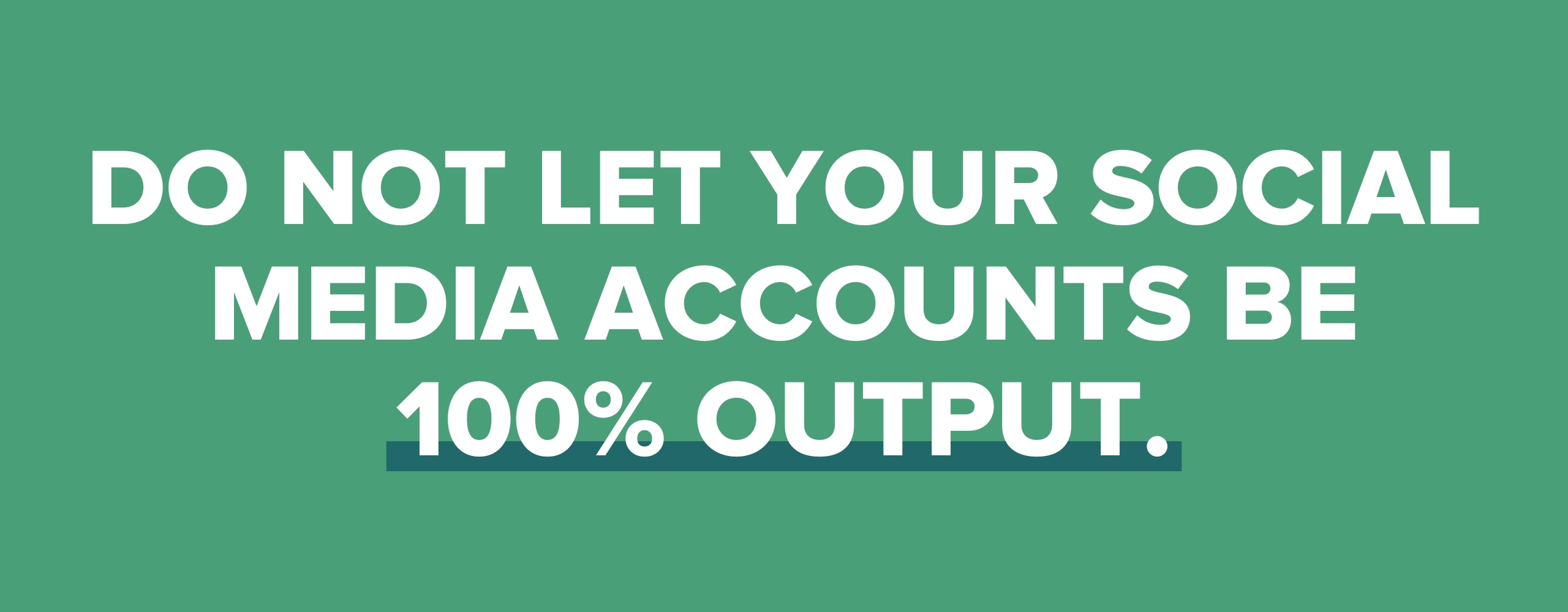
If someone complains about your service on your Facebook page, use it as an opportunity to knock their socks off by making it right — or at least investigating to find out what went wrong. You won’t just make that person happier and keep a current customer in the fold, you’ll also impress all the other followers who see the interaction.
This is often a point of contention with businesses because they feel they should hide from negative press so they don't draw attention to it. But believe me, responding only to the good comments looks worse than acknowledging the not-so-nice ones and trying to make them right.
8. You're not being human
It’s okay to use a script of approved brand messaging or responses for social media. Just keep in mind that you don’t want your outreach to be totally scripted.
Even if you have some stock responses, try to personalize the message as much as possible to make people feel like you really do care about them and their unique needs.
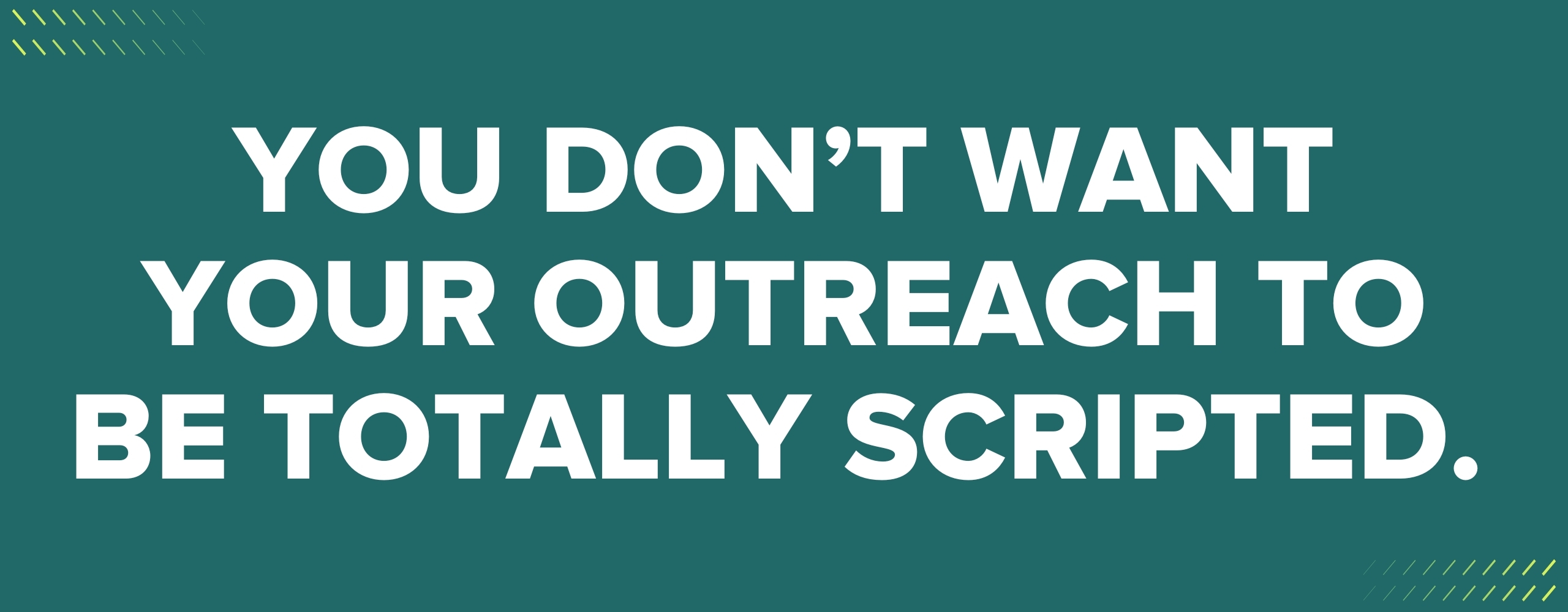
Buyers expect the world now. We watch the movies and shows we want on demand. Spotify creates playlists specifically for our music tastes. We all want to feel unique and special.
Include personalization in your social media efforts.
Zappos is a brand beloved not only because of how they resolve customer service issues but because they sound friendly and human.
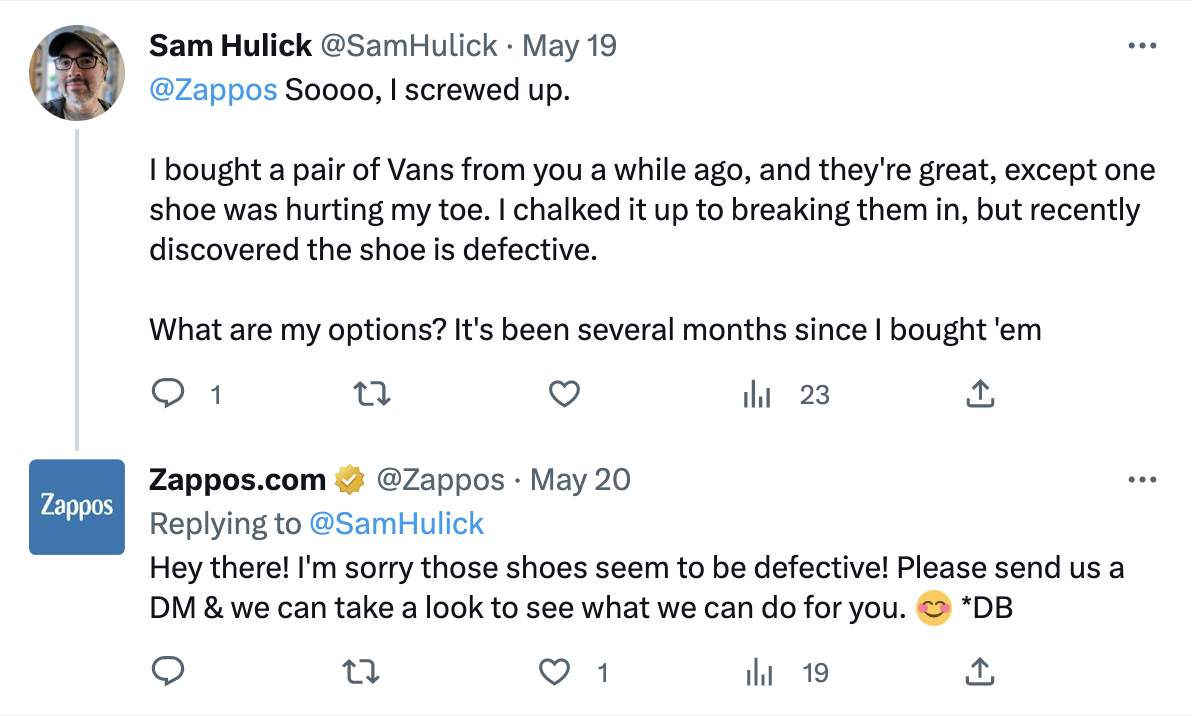
Sounding like an actual person instead of an AI corporate bot will help you connect with your prospects and customers, and that’s the name of the game.
9. You're not sharing content that users care about
That note about posting unique replies? It goes for everything you’re sharing on social media.
There’s a lot of noise out in the social-verse — and that's increasing exponentially in the age of AI-generated content. To cut through that noise and be heard, your content needs to be engaging, educational, emotional, and/or empathetic (Thanks, Marcus and Tyler!).
Leaning heavily in the auto-publishing social feature of your blog or posting the same content over and over is going to drive your followers nuts. Fifty posts per week won’t make a bit of difference in terms of engagement if they’re all junk. You need to share unique posts that are worth their precious time.
Curating third-party content is an excellent way to break things up on your feed. By sharing articles or videos from other companies, for example, you’re showing your audience that your main goal is helping them, not just shoving your products in their face.
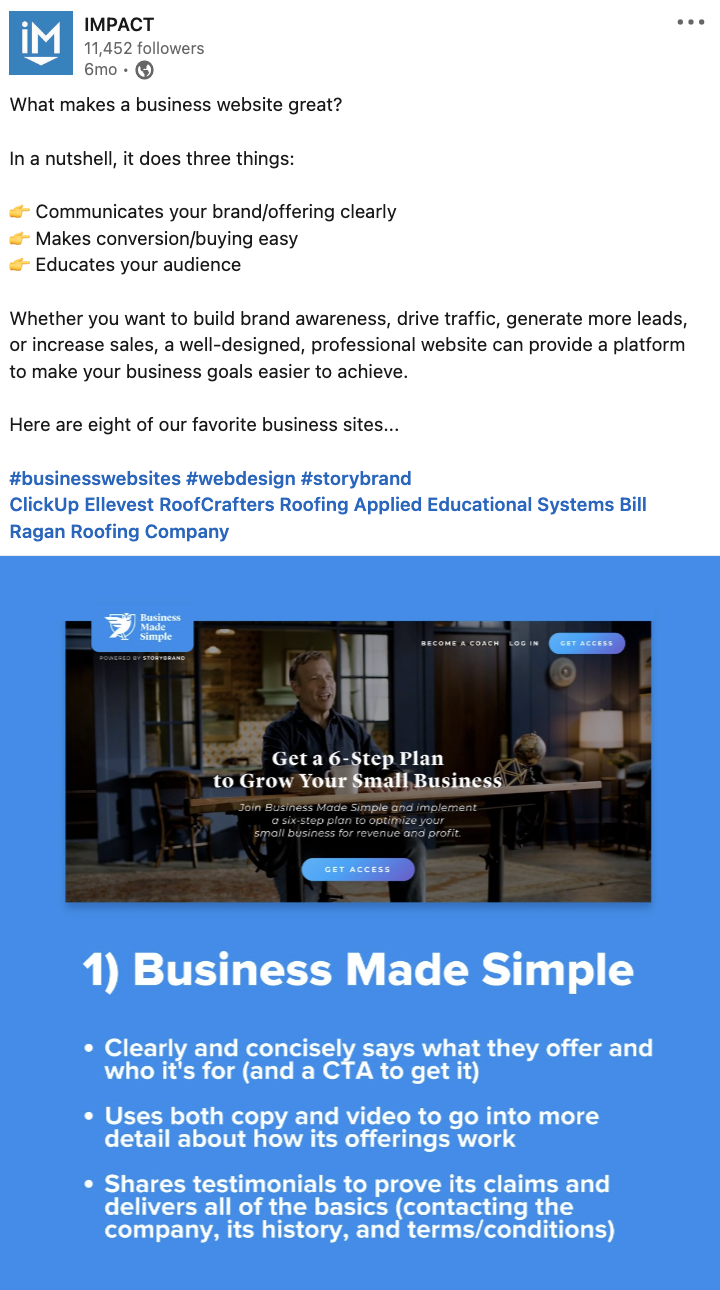
At the same time, make sure you comment on other posts to show you're always part of the conversation.
They will come to think of you as a trusted source of things they’re interested in and keep coming back for more.
10. You're not leveraging employees
Don’t let your company’s social media success sit on the shoulders of one person. All of your employees who are on social media should be following your brand and engaging with your posts.
Beyond adding your team to your follower count, you can actually leverage your employee base more tactically. Use them to strategically amplify the reach of your social posts.
For instance, you can do what we call a “social media takeover.”
Ask everyone on your team to share something specific all at the same time on the same day. It could be an event announcement or product launch news — something you need to get a lot of eyes on.
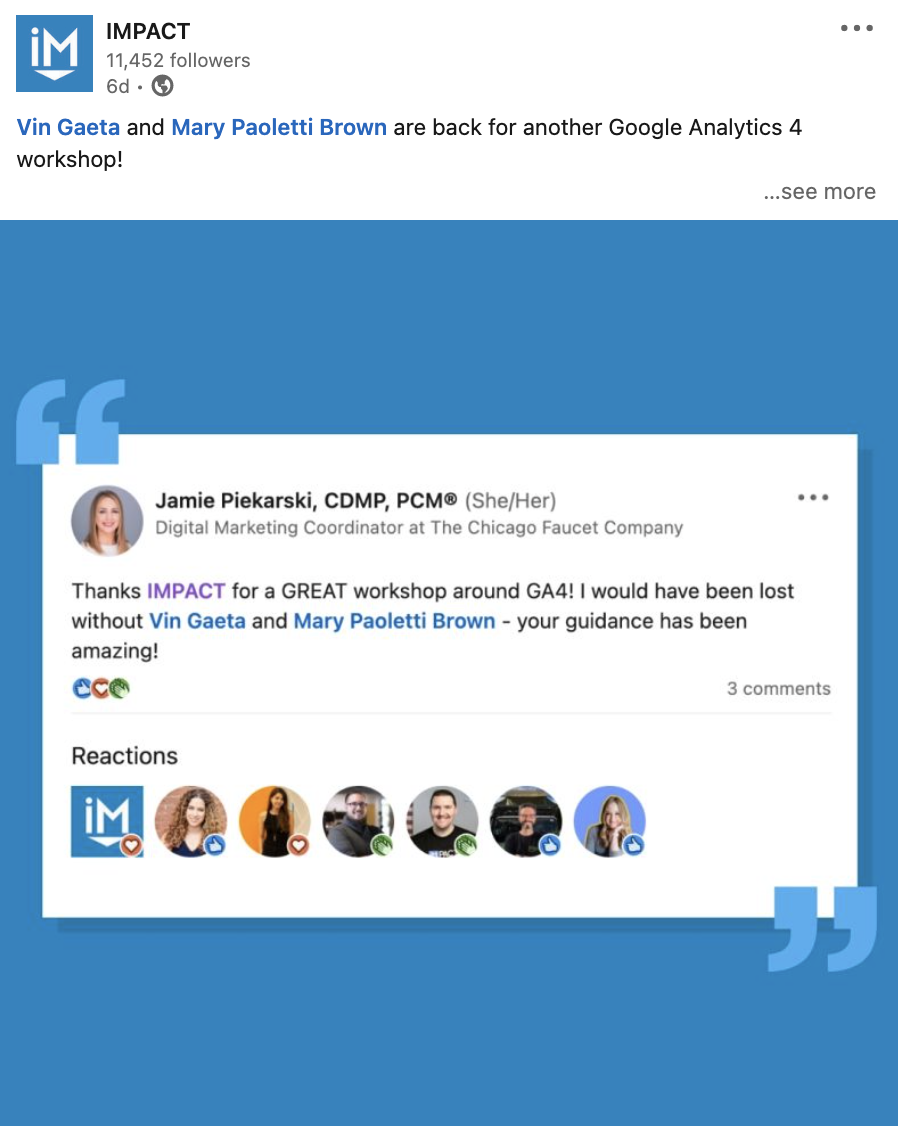
Consider creating a prompt that asks a question that all your employees have to answer. The prompt ensures the posts will be themed around the same goal, but still be unique and interesting because everyone will have their own answer.
You do want people to see multiple posts about the same thing in their feed, you just don’t want every post to have the exact same copy because that is, of course, extremely annoying.
When everyone shares the post at the same time you’ll automatically get a lift in reach.
11. You're not tracking and monitoring key performance metrics
Look, I’m a website strategist with an inbound marketing background; I’m a slave to data, so that’s always where I’m going to point you. But it’s with good reason! The reason digital marketing totally kicks ass is because your efforts are measurable.
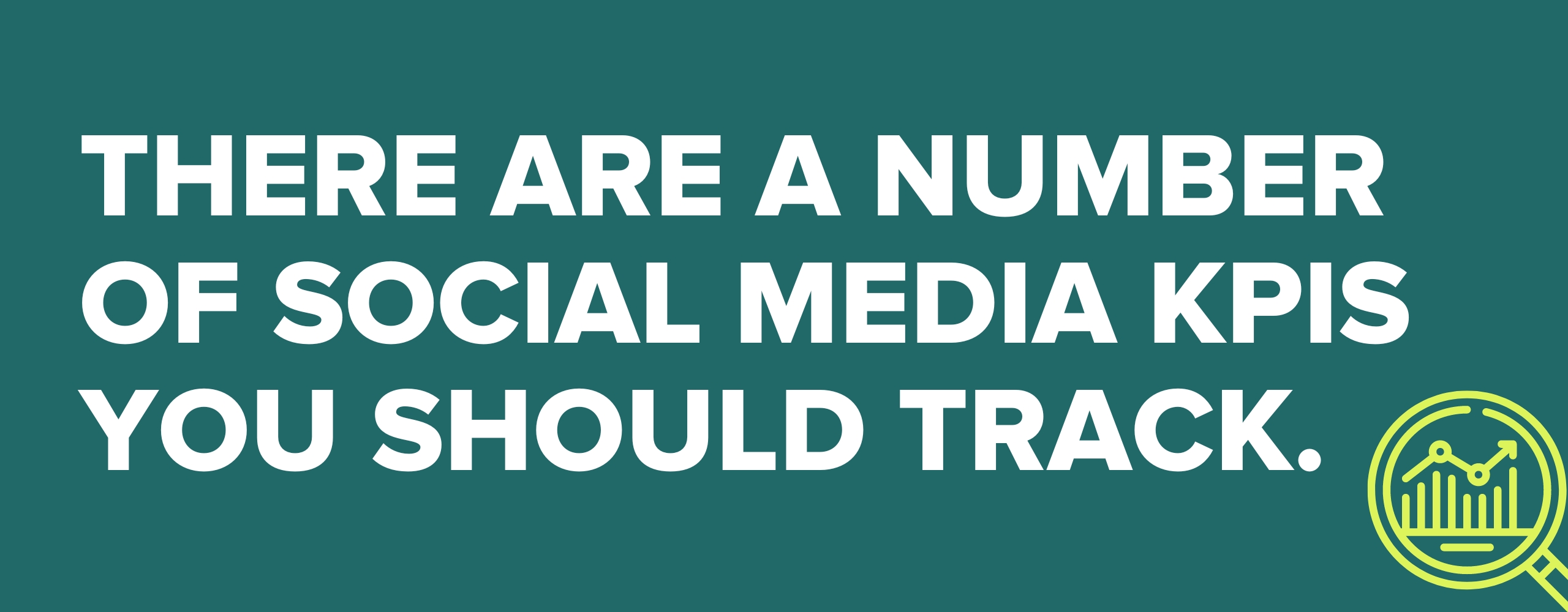
So stop gambling your department’s money away. Take benchmarks and report regularly on your progress.
There are a number of social media KPIs you should track.
As my colleague Ramona Sukhraj wisely notes, you shouldn’t expect to gain a ton of new customers from social channels. It’s more important to note which platforms are bringing in the most leads and which are bringing in the fewest so you can know where to spend your time.
You should also examine the success of each individual post.
- How does each post perform in terms of engagement, shares, frequency, time of day, and overall sentiment?
- You should also look at impressions to see how many times something shows up in a feed, which speaks to the potential versus actual engagement.
- Mentions and sentiment are also important so you can keep tabs on how often posts are shared and if those shares and mentions are done in good or ill will. Do people like you and your content? Sentiment will tell the tale.
- On the customer service side, you should be tracking response time and resolution rate. This is data you can put to great use: Once you have a baseline for how quickly you’re responding to people and how well their issues are being resolved, set goals for doing it faster and better.
12. You don't have an employee owning it
Social media is one of the most visible parts of your brand, opening your company up to comments and criticism. Handling this needs to be someone’s job.
Many companies make the mistake of handing their social media accounts over to a college grad because they think the main requirement is someone who is comfortable with social and technology. While that is one requirement, it’s not the most critical one.
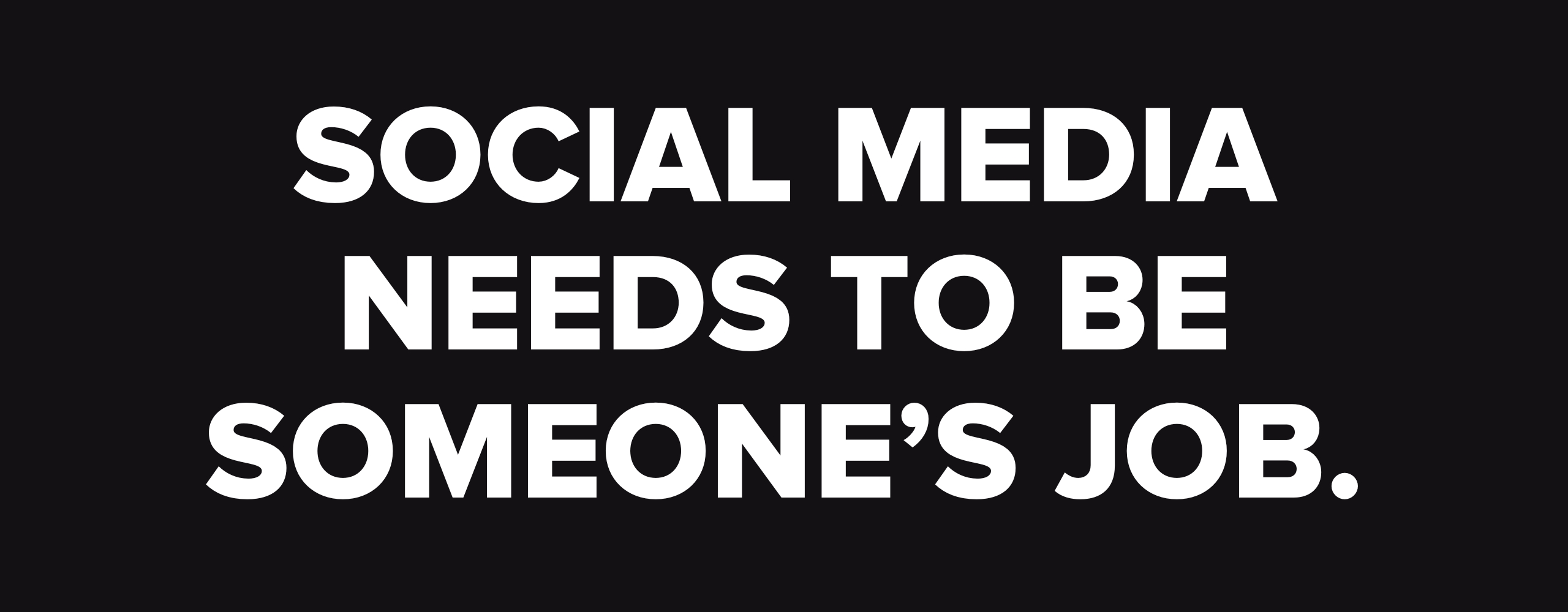
You need a seasoned professional who can act as a direct representative of your company’s culture and values. This person needs to embody your voice and tone and be able to handle both positive and negative feedback with grace.
In case there is any ambiguity, let me be clear: This is a full-time job.
Your social media manager will be responsible for
- your channel strategy
- responding to posts online
- crafting engaging posts that will bring people in
- acting as customer service
- and potentially performing brand protection.
All of this requires experience, patience, and flexibility.
If you’re still not sure if you need a social media manager, Steph advises that you ask yourself two questions: Does the number of sites you need to manage overwhelm you? Do you understand the importance of social media but you’re afraid to manage it yourself?
If you answer yes to both, start writing a job description to put on your website today.
Use these guideposts to set your social strategy straight
The fact that you’re reading this blog post means you care about doing well on social media, and that’s a great place to start. You can now use these 12 don’ts (and their accompanying dos) as your springboard to either get started or straighten things out.
This post doesn’t cover every single thing you need to do to see hockey stick growth on your chosen social platforms, but it will definitely lay a solid foundation you can build on.
The next block I recommend building with is Stephanie’s “Fundamentals of Social Media Marketing” course for IMPACT+. If you don’t already have a membership, signup is absolutely free and you’ll gain instant access to tons of content like Steph’s.
Social media, as a digital marketing tool, can dull quickly. It’s critical to your company’s strategy that you stay educated as new platforms pop up, trends change, and buyer behavior evolves. Luckily for you, you’re in the right place.
Good luck!


Order Your Copy of Marcus Sheridan's New Book — Endless Customers!

